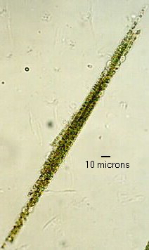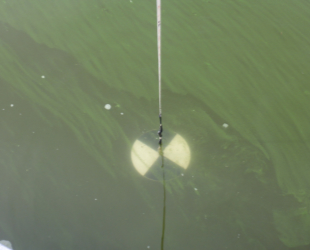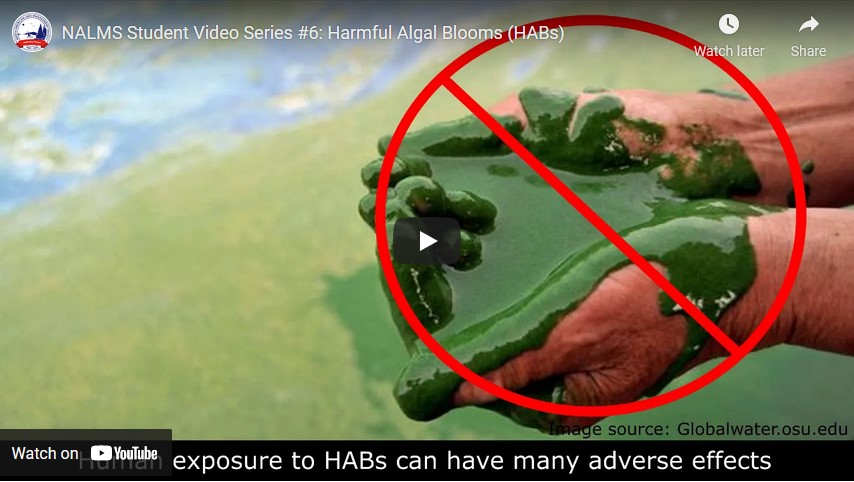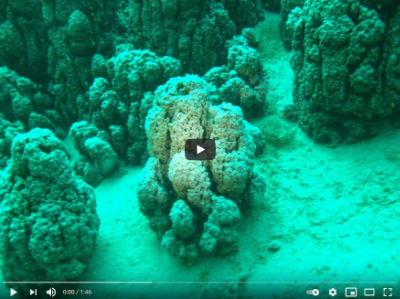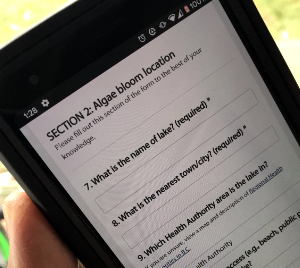What are cyanobacteria (blue-green algae)?
Cyanobacteria (also known as blue-green algae) are naturally occurring microscopic bacteria that are common to freshwater ecosystems across B.C.
They are commonly called blue-green algae as they share some key features with algae, such as being aquatic organisms that are capable of photosynthesis. However, it wasn't until the advent of high-powered microscopes that cyanobacteria were correctly identified as bacteria.
In most circumstances, cyanobacteria cause no apparent harm in waterbodies, but when conditions favour their growth (e.g., warmer water temperatures, high nutrient concentrations, stable conditions), they can multiply very quickly and create a bloom. These "cyanoblooms" can occur in a variety of colours including blue-green, green, brown, blue, white, and red. Also, depending on the species and abundance, their appearance in waterbodies can be quite varied (e.g., pea soup or paint-like, small grass clippings, globular or bead-like, fluffy or pom-pom-like).
![]() Cyanobacteria blooms are of particular concern as there are several species capable of producing toxins that can be harmful to humans, domestic animals, and livestock. They can produce potent liver toxins, neurotoxins, as well as skin irritants. However, not all cyanobacteria are toxic, and even toxic species do not always produce toxins.
Cyanobacteria blooms are of particular concern as there are several species capable of producing toxins that can be harmful to humans, domestic animals, and livestock. They can produce potent liver toxins, neurotoxins, as well as skin irritants. However, not all cyanobacteria are toxic, and even toxic species do not always produce toxins.
If you are concerned and want to report a cyanobacteria bloom in a body of water used for drinking water or for recreation, contact your local health authority.
For more information about cyanobacteria health concerns, visit HealthLinkBC.
When in doubt, stay out!
Harmful algal blooms
The following video from the North American Lake Management Society (NALMS) talks about the human and environmental health effects of Harmful Algal Blooms (HABs).
...previous topicWhat are Algae? |
next topic... |
Image references
(1) Source: https://www-cyanosite.bio.purdue.edu/
All other photos are from Ministry of Environment and Climate Change Strategy staff files
In this section
Use our online Algae Watch Observation submission form to send us your algae bloom photos and description.
If you have concerns that are immediate and related to drinking and/or recreational water use, please contact your local health authority.
To report a spill or other contamination source, contact the Provincial Emergency Program spill reporting line at 1-800-663-3456.
To report an act of pollution, contact the RAPP (Report All Poachers and Polluters) Line at 1-877-952-RAPP (7277), or report a violation online.

